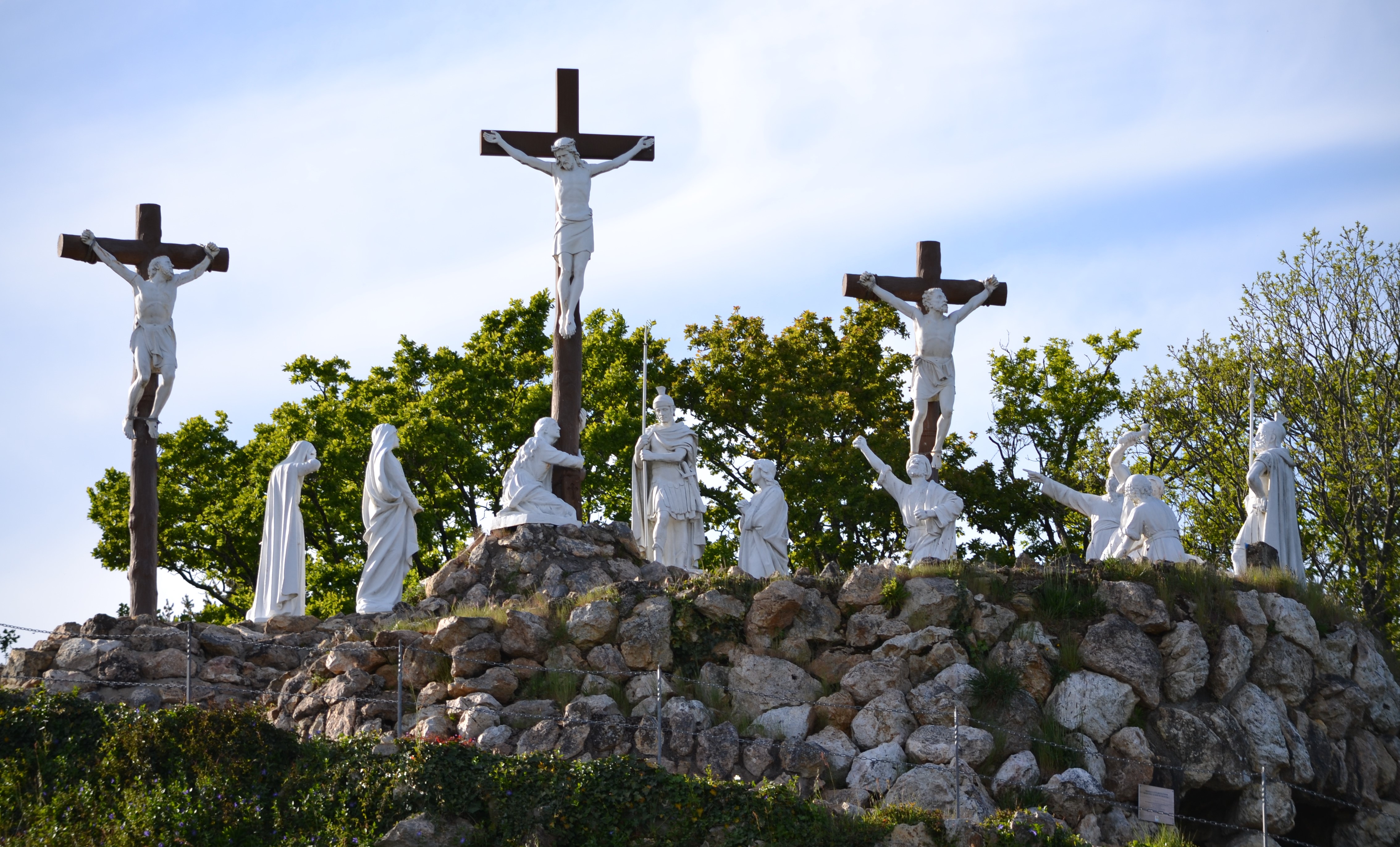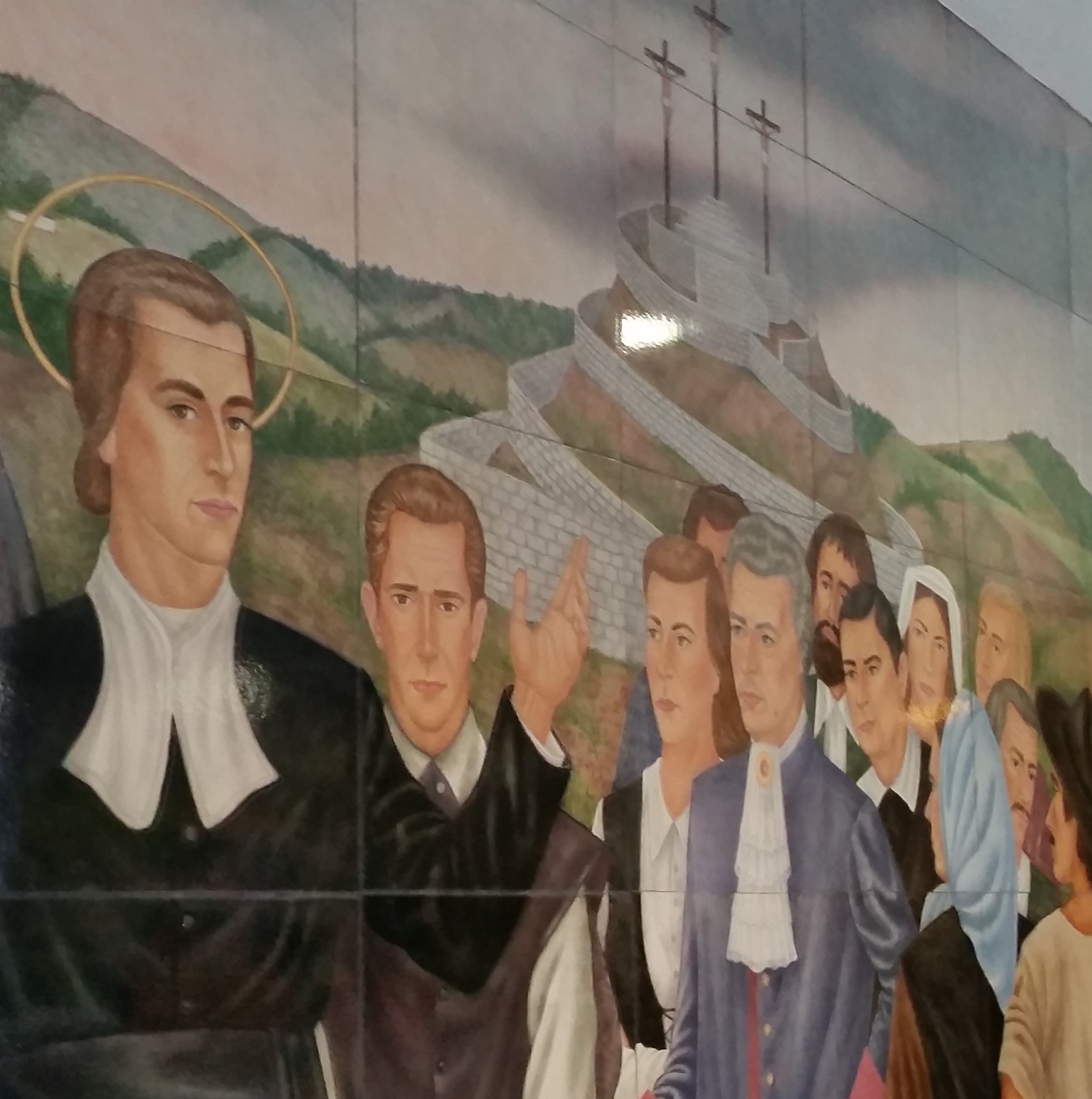Saint Louis Marie de Montfort
An Often Misunderstood Saint Part VI: The Pontchateau Affair (1709-1711)
Fr. Patrick Gaffney, SMM
N o other event in the preaching ministry of Saint Louis de Montfort is as well-known as the erection and subsequent demolition of the Calvary of Pontchateau. To dis-entangle the web of tales which has been spun in the constant re-telling of this epic is no easy task.
The story begins in the summer of 1708. Fresh from the setback in the diocese of St. Malo, Father Louis Marie entered the adjoining diocese of Nantes, thanks to an invitation from Father Barrin, vicar general of Nantes and friend of the Grignion family. Barrin opened the doors of the diocese to Father de Montfort for a specific purpose: to preach parish missions. Montfort was elated. However, considering the reputation of the missionary for the “extraordinary,” the vicar general initially assigned him to work along with a Jesuit, Father Jabot, who was conducting a parish mission at St. Similien. And to reassure himself, Father Barrin together with a well-known preacher / theologian, Father Martinet, decided to sit in on the first sermon that Louis Grignion would preach at the parish. They came not so much to learn but to judge. They left dumbfounded, profoundly and visibly shaken by the extraordinary transforming power of the Spirit which, wave after wave, swept through the entire congregation as Father de Montfort proclaimed the Word.
Convinced of the marvels Louis de Montfort would do for the Church of Nantes, Father Barrin gladly unleashed Louis de Montfort’s talents to renew the faith of the area. The roving missionary would, with Barrin’s blessing and encouragement, become the director of his own mission band. What Father Leuduger and his team were doing for St. Brieuc, Barrin was convinced that Father de Montfort and his mission band would do for Nantes. For eight years, parish after parish not only of Nantes but of Lucon and La Rochelle would be reformed and renewed by the constant preaching of this new team of missionaries. Capuchins, Jesuits, Dominicans and diocesan priests freely joined the renowned preacher either for one mission or for a longer stretch of time. All the missions were undertaken without any subsidy or financial support from civil foundations or religious orders or dioceses. The people of the parishes provided for them as best as they could and the pastor had but one responsibility: finding lodging for the team. And Montfort’s personal signature of elaborate, creative dramatizations, processions, hymn-singing, solemn renewal of the promises of Baptism, public consecration to Our Lady, the daily praying of the Rosary, attracted thousands to a renewed life in Christ Jesus.
The two and a half years of Montfort’s stay in the Nantes diocese were extremely difficult times for France. The stubbornness of Louis XIV had permitted the Wars of Spanish Succession to drag on. Since 1701, draining the country not only of material goods, but also of its spirit. During the devastating winter of 1708-1709, untold numbers died of cold and hunger. The harvest was a disaster. Relief funds were for the most part non-existent. It is said that the dead were picked from the streets and buried in mass graves, so ferocious was the famine. May 16, 1709 the precious relics of Saint Genevieve were processed through the streets of Paris, begging the patroness to intercede for the starving population.
The colorful mission was a respite from the daily trials of life and for the beggars, also a source of fending off starvation. Father de Montfort plagued the rich – some of whom had get-away cottages in the country-side – to share their illegally hoarded wheat with the poor. Montfort’s parish missions were, along with their soup-kitchens, remarkably popular.
Several priests and brothers joined the famous missionary, forming his core team. Brother Mathurin – leader of song and a principal organizer of processions – was joined by a Brother Peter who took care of the kitchen. Father Ernaud des Bastiéres, a diocesan priest of Nantes, linked up with Louis de Montfort in 1708 and stayed at his side, except for a few interruptions, until the saint’s death in April, 1716. And at Father de Montfort’s request, a Father Gabriel Olivier, also of Nantes and an alumnus of the Gregorianum ln Rome, became another member of the mission band during the preaching in the Nantes area.
Although Blain speaks of some outbursts of jealousy and scuttlebutt directed against Montfort on the part of some of the diocesan clergy, there appears to have been nothing but enthusiasm when the roving missionary announced his plans for an immense Calvary at Pontchateau. And it would be definitely grandiose.
The thought of erecting a great Crucifixion shrine may have dated back to the earliest days of Saint Louis de Montfort’s ministry. He had admired the large Calvary on Mont-Valerien in Paris when he had been sent there by the Archdiocese in 1703 to bring some peace to the disgruntled hermits dwelling on the hill. He had even bought a six foot Corpus during a mission he preached as a member of Father Leuduger’s team and was looking for a spot where he could place it on a cross for public veneration.
During a mission at Pontchateau, he noticed a large mushroom-shaped area (as Grandet describes it) and finally decided that it would be there, at the highest point of the land, that the Calvary would be erected. A chapel, dedicated to Mary Magdalen and badly in need of repairs, was in this locality called “the land of the Magdalen.” With some of the parishioners, he marked out the site of the future shrine by digging a ditch around the base of the mushroom-like hill to keep the roaming animals away from what would become a sacred mound.
So unbelievably enthusiastic was the response of the people to Montfort’s Calvary project that he greatly enlarged the plans (and this became his undoing!). The simple ditch would become a series of circular moats. The earth extracted would be used to build up the top of the mound, making it appear more like a hill. Three crosses would be planted at the peak with a large grotto underneath to commemorate the Holy Sepulcher. Statues of Our Lady, Saint John, Mary Magdalene would be placed at the base of Jesus’ cross. And around the top of the mound was to be built a low wall with little pillars of wood on top which would support an immense circular rosary. The beads were so large, Grandet says, that they were the size of the boules of a bowling game. Chapels in honor of the mysteries of the rosary, 150 trees around the base creating a “natural rosary,” all and more were part of the blueprint drawn up by the ardent missionary. The original Calvary was in the hands of the Turks but no need for alarm: a new one was being erected at Pontchateau! Montfort wrote a rousing hymn whose refrain became a triumphant cry sung by the workers:



Tile mural depicting a scene of St Louis de Montfort’s Life and Pontchateau Today and at the Time of Fr. de Montfort
This mural (image #1) appears immediately outside the chapel in Montfort’s Spiritual Center. This first scene depicts Louis Grignion’s leaving to begin his studies in Paris. Louis Grignion walked to his destinations and this journey was no different. It is over 250 miles between the towns. He would give up his clothes and money along the way.
The second image is how Pontchateau looks today. The Calvary scene built by the town and Fr. de Montfort over 110 years ago, then by order of the bishop, was dismantled, was rebuilt years later. Several of the crosses and characters at the time of the initial build were saved and, years later, used during the rebuilding.
The third image is actually a tiled mural of Fr. de Montfort at Pontchateau and is located outside the Chapel of Montfort Spiritual Center.
Volunteers, all told, numbered about 20,000! Some days more than 500 people could be seen, lugging heavy piles of dirt and stone, driving the many oxcarts, digging the moats, piling more and more earth at the high point of the mound.
Alas! The Turk now holds the Calvary Where Jesus Christ did die.
Christians! Let’s build one right here among us.
Let’s build a Calvary here,
Let’s build a Calvary here!
Volunteers, all told, numbered about 20,000! Some days more than 500 people could be seen, lugging heavy piles of dirt and stone, driving the many oxcarts, digging the moats, piling more and more earth at the high point of the mound. Most were the poor farmers and the homeless of the area but there were also priests and people from the social register who wanted to have the honor of taking part in this magnificent religious event.
There was even a sprinkling of Spanish and Flemish, probably deserters from the armies fighting with France and who now joined the ranks of the starving homeless. Some workers brought along a piece of black bread for the day. The others were fed through the ingenuity – the people called it the miraculous powers – of Louis de Montfort who constantly influenced those better off to give to the beggared. Grandet writes that “an untold number of the poor” [working at the Calvary] would have died of hunger were it not for Louis de Montfort.”
(To Be Continued)


